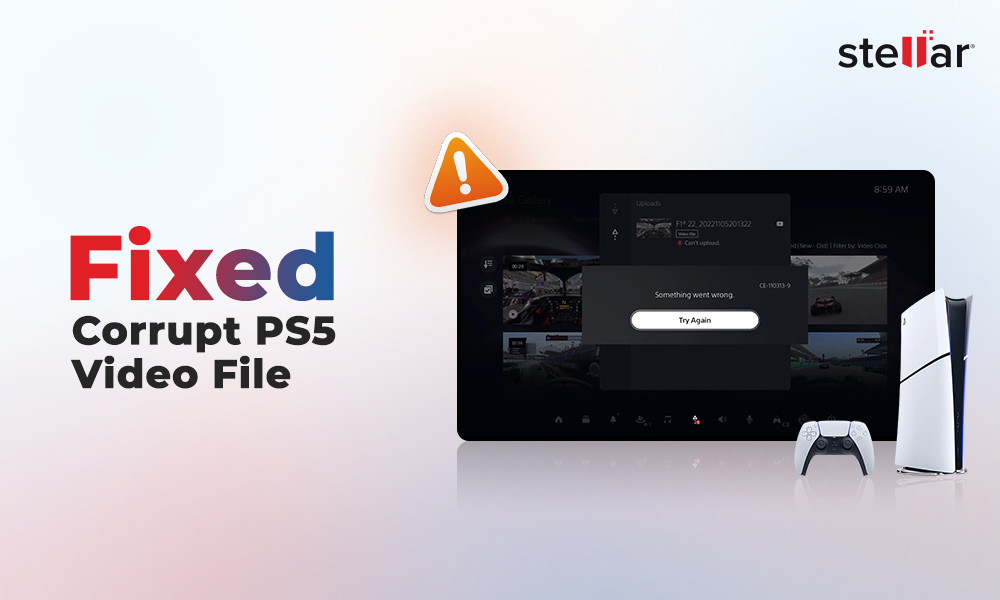I downloaded some MP4 videos on my Windows computer, but for some reason, they just won’t play, neither in Windows Media Player nor in Movies & TV app. I get the message ‘Windows Media Player can't play the file’. How can I fix and play MP4 video files on Windows 11?
MP4 is a versatile and popular video format that maintains video quality despite its small file size. This makes MP4 video files shareable across all social media platforms and devices. However, some users complain that they can’t play MP4 files on Windows 10 or Windows 11 PC and laptop.
It can be annoying to wait to watch your favorite videos or movies, but cannot view them for unknown reasons. However, there is no need to be anxious anymore. In this post, you can find the effective methods to fix Windows can’t play MP4 files.
Why is MP4 file not playing on Windows 10/11?
From missing codecs to MP4 file corruption, there could be any reason for MP4 video not playing on Windows 10 or Windows 11 PC. Playing an MP4 file in a media player that doesn’t support the format will also lead to video errors. For instance, Windows Media Player version 10 and below are incompatible with MP4 format. Hence, MP4 files won’t play in these players.
Here are some common reasons why you can’t open MP4 files on Windows 10 or Windows 11:
- Media player doesn’t support MP4 format
- Windows media player doesn’t have necessary codecs
- MP4 file is corrupt or damaged due to virus infection, bad sectors in the drive, etc.
- Virus infection or malware in the system
- Video drivers are not updated, causing video errors in Windows
Best methods to fix ‘Can’t play MP4 files on Windows’
- Update MP4 media player
- Install Missing Codecs
- Convert MP4 files
- Try Another Media Player
- Try to Repair MP4 file

1. Update MP4 media player to the latest version
No matter which media player you’re using, update it. Updates fix technical glitches, enhance performance, and add new features and video file format support.
The previous Windows Media Player 10 and below versions cannot play MP4 video files. You need to upgrade to the latest Windows Media Player version 12 to watch MP4 files on Windows 10.
To upgrade to Windows Media Player 10, follow the below steps:
- In Windows Start button, type features.
- Select Turn Windows features on or off.

- Expand Media Features. Uncheck the Windows Media Player check box and click OK.

- Restart your Windows PC. This removes the current Windows Media Player version.
- Again in the Windows Start button, type features.
- Expand Media Features. Select the Windows Media Player check box and click OK.

- Restart your PC to reinstall the latest version of Windows Media Player on our laptop/ desktop.
2. Install the relevant MP4 codecs
According to Microsoft, a codec ‘compresses or decompresses media files’ to ‘play and create media files’. All media players, including Windows Media Player, VLC Player, and others, require relevant codecs to play a particular file type.
Codecs are usually built into media players. If your media player can’t play MP4 files on Windows 10 or Windows 11, check if it supports the MP4 format. If it doesn’t, install the relevant codecs.
To install MP4 codecs on Windows 11/ Windows 10, you can get a codec pack, such as K-Lite or Media Player Codec Pack or other.

- Go to the K-Lite Codec Pack website. Click on the Download button, now choose the Standard or Basic codec pack from the list of codec packs.

- Hit Download and then select the Server 1 to start the download.

- Once the K-Lite Codec Pack standard version gets downloaded, install it, and restart your device.
In case Windows Media Player won’t play MP4 videos, you can configure it to install codecs automatically. To do so, follow the below steps to install MP4 codecs in Windows Media Player:
- Open Windows Media Player.
- Navigate to Tools > Options > Players tab.

- Under the Player tab, in Automatic updates, select any one ‘Once a day’ or ‘Once a week’.
- Click OK to install Windows Media Player codecs automatically.

If you receive a message to install the codec, click Install. Once you install the codecs, MP4 video files should play on Windows Media Player.
3. Run the Windows Troubleshooter
Windows 10 and Windows 11 offer built-in assistance to troubleshoot video playback issues. If you can't play MP4 files on Windows, run the troubleshooter to fix video errors.
Here are the steps to troubleshoot MP4 problem in Windows 11:
- Press Windows+I keys to open Settings in Windows 11.
- Select System on the left pane.

- Click on the Troubleshoot option on the right pane.
- Click Other troubleshooters. The list of troubleshooting problems appear.

- Scroll down to Video Playback and click on the Run button.

- Once the troubleshooting finishes, restart your Windows 11 and play MP4 files in the media player. This should fix Windows 11 can’t play mp4 problem.
4. Convert MP4 files format
If you can’t play MP4 files on Windows 10 or 11, try converting the file format to fix the issue. File conversion is a quick way to bypass the missing codec issue. You can convert MP4 files to AVI, WMV, MOV, or any other format supported by your media player. Try online programs like CloudConvert, Handbrake, etc. or desktop apps like WinX HD for video file conversion.
5. Play MP4 files in another media player
Consider playing MP4 files in a different media player that supports the format. The best choice could be a free and open-source VLC Media Player. It is known to play almost any video file type without any issue. The media player is compatible with Windows 11.
Other than VLC, you can try Movies & TV app, DivX Player, KMPlayer, 5K Player, RealPlayer, QuickTime, etc. These media players support 5K 1080p HD/ UHD MP4 video files and are compatible with Windows 11 and Windows 10.
Meanwhile, Windows 11 users can trust its new default ‘Media Player’. It’s the improved version of Windows Media Player in Windows 10.
6. Repair unplayable MP4 file
If you have tried the above methods but still can’t play MP4 video files, there’s a high chance that the video is corrupt. The easiest way to fix a corrupt video is using a video repair tool. Stellar Repair for Video is a popular video repair software that fixes major corruption issues and makes the damaged or inaccessible MP4 files playable again.
All you have to do is download the software on your Windows computer, run it, select the corrupt or unplayable MP4 video file, and hit Repair. The software will diagnose the MP4 video file and try to fix corruption-related issues.

In no time, it repairs the severely corrupt MP4 videos and shares the preview of the repaired files before saving.
However, if you are looking for a quicker solution, and want to skip installing the Stellar Repair for Video software, try out the online video repair service. Stellar Online Video Repair is a handy and fast online tool that fixes all types of corrupt videos and runs on any device, be it Android, iPhone, Mac, or Windows PC. The online video repair service works similar to the software, but comes with a file size limit of 5GB and repairs about 17 types of video file formats, including MP4, MOV, etc.
To use the free online video repair tool, you need to visit the website, upload the corrupt or unplayable file, add a sample file, and then wait a few minutes until the corrupt MP4 video file is repaired and ready to be downloaded, all in a couple of minutes.
Conclusion:
If you are unable to play MP4 files on Windows 10, the issue is likely due to outdated media player, missing codecs, or MP4 file corruption. Hence, by updating your media player, downloading missing codecs, trying out other video player or converting the file format, you will be able to resolve the playback issues. However, if the problem persists, you can try fixing the MP4 video file for any corruption issues with Stellar Repair for Video and check if this resolves the playback problem.













 9 min read
9 min read





